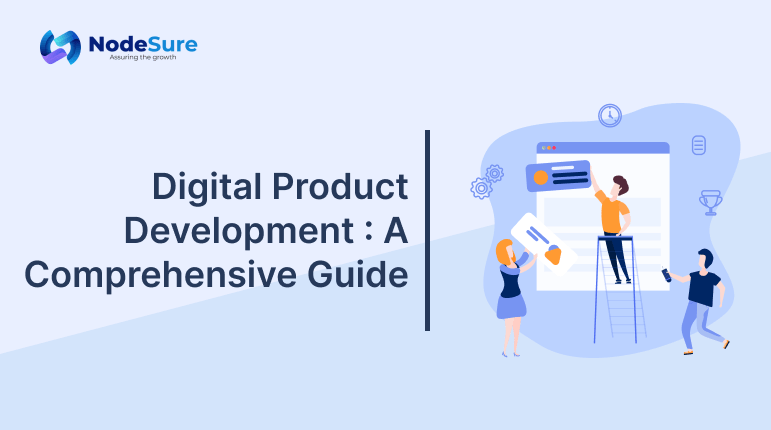In today’s tech-driven market, digital product development is the cornerstone of innovation for businesses seeking to establish a competitive edge. Digital products, ranging from mobile apps to complex software solutions, have become essential tools for enhancing customer engagement, streamlining operations, and driving growth. This guide provides a detailed overview of digital product development, covering its essential phases, key considerations, and best practices to ensure success.
What is Digital Product Development?
Digital product development involves the creation of software-based solutions or digital tools designed to fulfill specific customer needs or solve particular problems. Unlike physical products, digital products are scalable, easily updated, and can be distributed globally with minimal costs. The process combines elements of software engineering, user experience design, and business strategy, making it a multidisciplinary endeavor.
Key Phases –
1. Idea Generation and Validation: The process begins with ideation, where potential product ideas are brainstormed. Validating these ideas through market research, user interviews, and feasibility studies is crucial to ensure they meet a real market need.
2. Design and Prototyping: Once an idea is validated, the design phase involves creating detailed wireframes and prototypes. This stage helps visualize the product’s functionality and gather feedback to refine the concept before full-scale development begins.
3. Development: This phase includes the coding and building of the product. Agile methodologies are often employed to allow for iterative testing, development, and feedback incorporation throughout this phase.
4. Testing and Quality Assurance: Rigorous testing is conducted to ensure the product is reliable, user-friendly, and secure. This includes a variety of tests such as performance testing, security audits, and user acceptance testing.
5. Launch: After thorough testing, the product is launched to the market. This phase involves preparing marketing materials, planning the launch strategy, and setting up support channels for users.
6. Post-Launch Support and Iteration: Following the launch, continuous support and regular updates are provided to enhance the product based on user feedback and emerging market trends.
Considerations for Successful Digital Product Development
User-Centered Design: Always keep the end-user in mind. A product that is intuitive and easy to use is more likely to succeed. Incorporate user feedback early and often to shape the product’s development.
Scalability: Design the architecture to handle growth in terms of user base, data volume, and transaction frequency seamlessly.
Security: Given the digital nature of the product, ensuring robust security measures are in place is crucial to protect user data and maintain trust.
Cross-Platform Compatibility: Consider developing the product for multiple platforms (e.g., web, Android, iOS) to maximize reach and usability.
Best Practices in Digital Product Development
Agile Methodology: Employ agile development practices to remain flexible and responsive to changes throughout the process. This approach facilitates better results through adaptive planning, evolutionary development, and continuous improvement. Continuous Learning and Adaptation Digital markets evolve rapidly. Staying informed about new technologies, user preferences, and industry trends is crucial for ongoing success.
Focus on Metrics: Define key performance indicators (KPIs) early in the development process and continuously track these metrics post-launch to measure success and identify areas for improvement.
Strategic Partnerships: Collaborate with other companies for technology integration, marketing, and distribution to leverage external expertise and expand reach.
Conclusion
Digital product development is a dynamic and complex process that requires a strategic approach to align with user needs and market demands. By understanding the essential phases and incorporating best practices, businesses can effectively navigate the challenges of digital product development and create products that offer real value to users and stand out in the competitive digital landscape.
This comprehensive guide provides a fundamental understanding of digital product development, tailored to entrepreneurs, business leaders, and product managers looking to delve into or refine their approach to creating impactful digital products.
